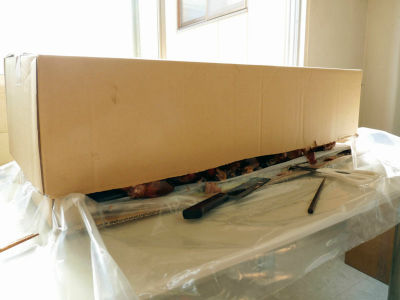I actually tried using the magic knife 'SAKAKNIFE' that can easily handle any fish with this one

Studies have shown that
SAKAKNIFE --Solid Alliance Co., Ltd.
https://www.solid-a.com/sakanife/
'Saka Knife' arrived with a package like this.
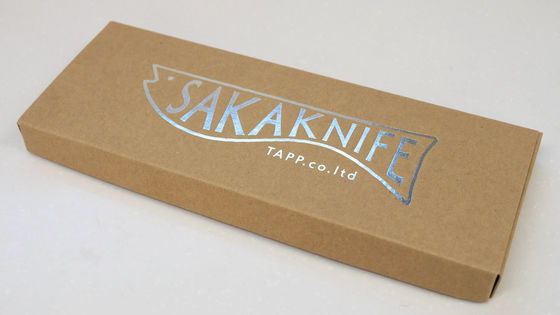
Inside was an instruction manual, a special sharpener, and a Saka knife body.
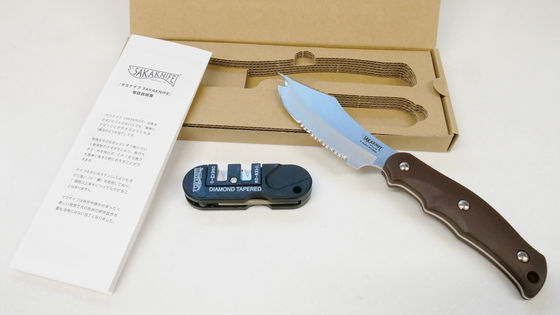
Compared to the iPhone XS, it is about this size, the total length of the Saka knife is about 21.6 cm, and the length of the blade length is about 10.3 cm, which is one size smaller than the usual Santoku knife.
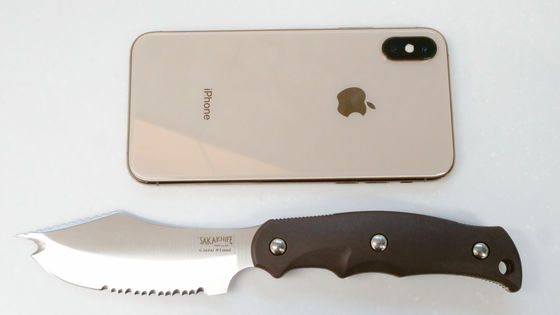
When I actually bring it, it looks like this.
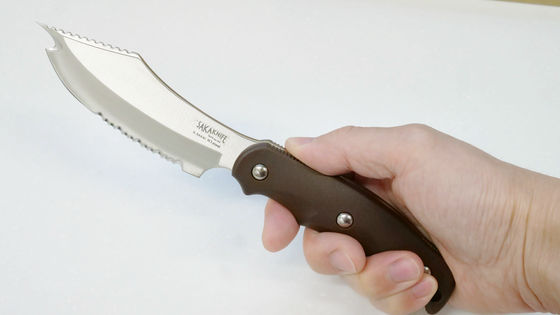
The grip has an ergonomic universal design that fits with either left or right hand, making it easy to hold with a perfect refit of the five fingers.
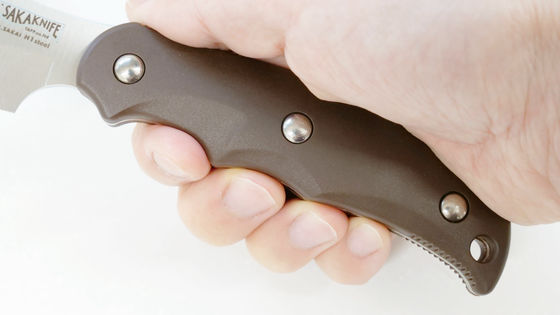
That's why I decided to actually handle the fish. This time, an editorial staff member who has little experience in handling fish will try a black rockfish of about 25 cm.
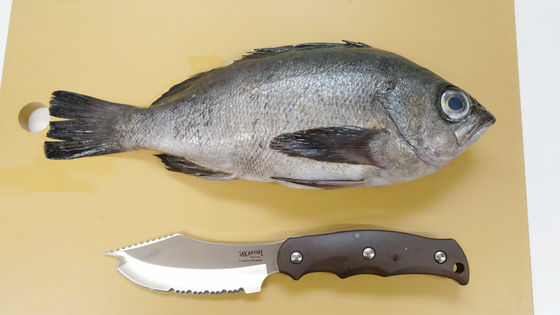
First of all, we will use a saw-shaped 'scale removal' that will be the back of the Saka knife.
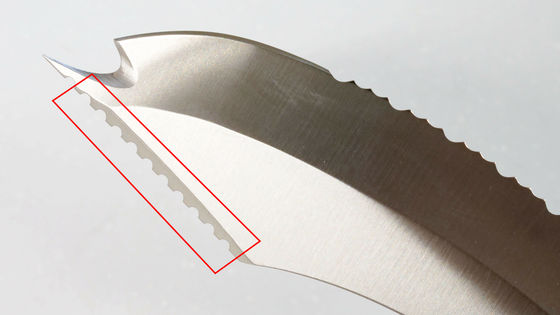
Apply the scales to the skin of the fish and rub it from the tail to the head.
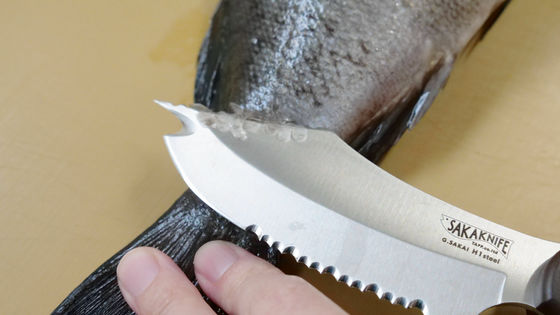
Every time you rub it, the scales will fall off. The editorial staff in charge of cooking commented that it was easy to use, saying, 'It's very good to take and the scales are hard to scatter.'

Drop the scales and the black rockfish looks like this.

Next, use the 'J-shaped blade' at the tip to make trace lines on the back and belly of the fish. The trace line is a guideline that assists in cutting into three pieces.
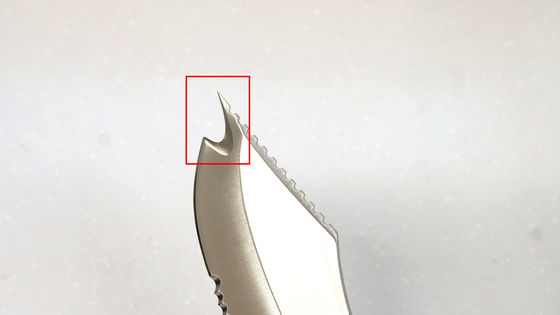
Stick a J-shaped blade closer to the tail of the dorsal fin ...
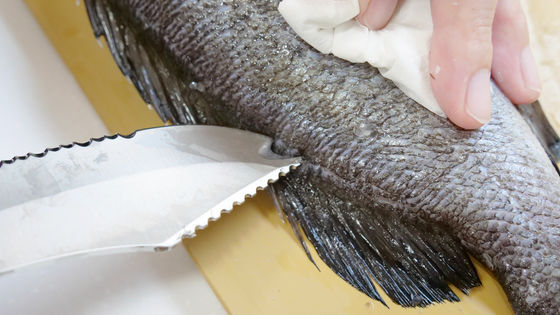
I will draw a line with a sizzle. This time, I used the Saka knife by pulling it instead of pushing it, but in this process I found that it was easier to use it by pushing it because the blade slipped into the skin of the fish. After drawing the trace line in this way, you actually insert a knife along the line and cut yourself.
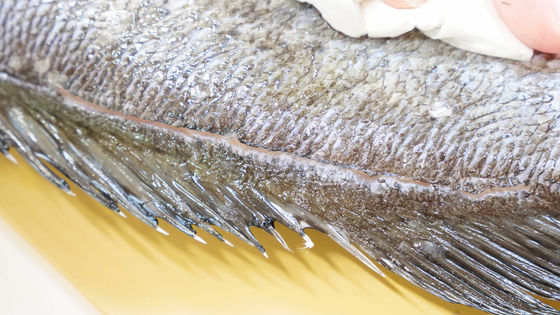
Next, cut off your head. The 'R-shaped blade' including the tip and the blade of the knife is used to cut the fish ...
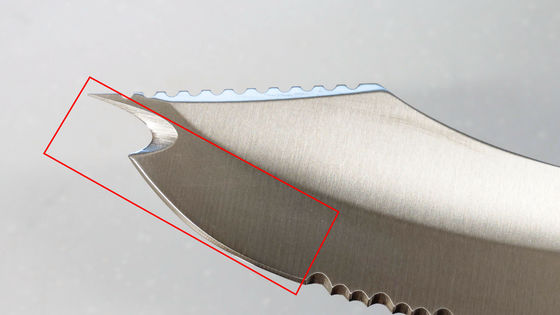
This saw-shaped 'wave blade' is said to be used when cutting bones.

So try. Insert an R-shaped blade along the base of the chest and abdominal fins on the body side of the gills.
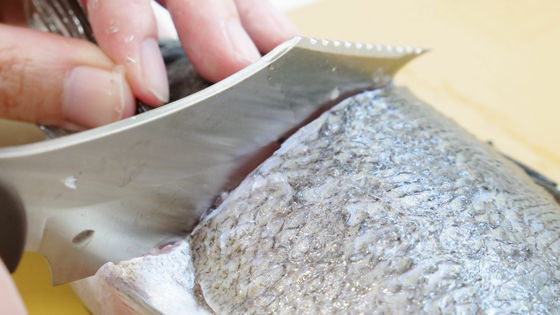
Since it hits the bone when the blade enters to some extent, cut the bone with a wave blade from there.
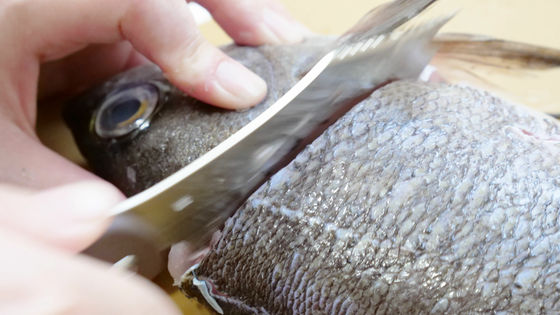
The neck was cut cleanly.
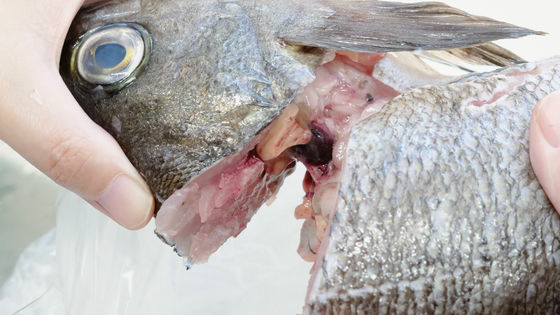
When you throw away your head, you can remove the internal organs, but it seems that some of them remain. However, it is said that 'the remaining internal organs are pressed with the tip of the Saka knife and pulled out', so it is okay for people who do not want to grab the internal organs.

The abdomen is clean, so wash it with water. If you use salt water, your body will not turn white, but this time I washed it with running water.
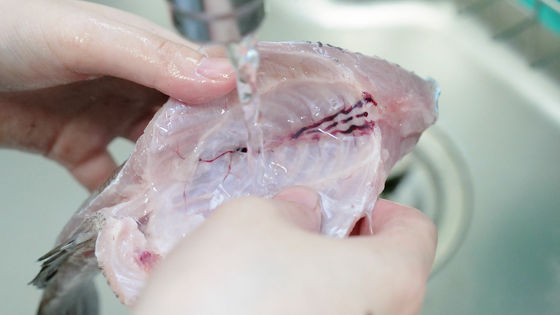
From here, fillet the meat. Insert the R-shaped blade along the trace line you drew earlier. On the back side ...
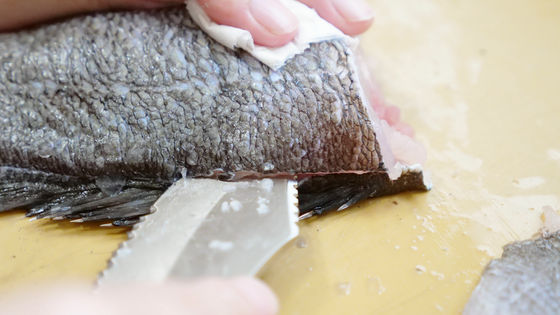
Insert the Saka knife from the ventral side. At this time, there is no blade on the tip, so if you shave while checking the feel by hitting the middle bone, you can fillet the three beautiful pieces. According to the editorial staff in charge of cooking, you can certainly pull the knife while checking the crispness that hits the bone and the feeling of getting caught.

When I actually grate it, it looks like this.
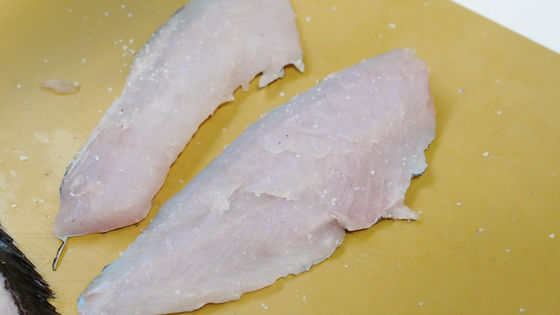
I tried the fillet with Meuniere. There were many editorial staff who had never eaten black rockfish, but they were highly evaluated as 'the taste is rich but the aftertaste is refreshing.'
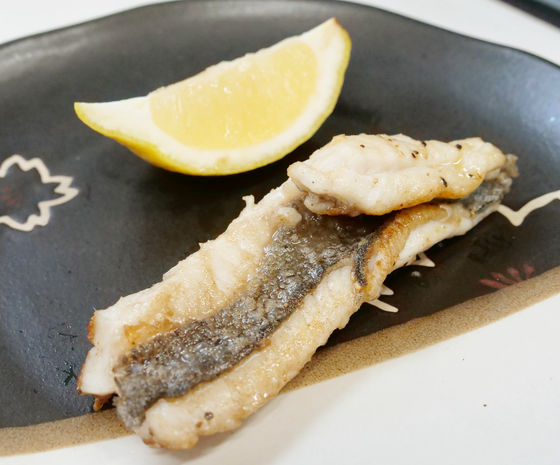
After actually using it several times, I was able to notice the 'ingenuity of the structure peculiar to Sakaknife' each time I used it, and discovered that 'I see, it is well thought out to handle fish.' Certainly, I have the impression that this one is enough to handle fish, and since it can remove scales such as troublesome scales, it can be enjoyed as an entertainment rather than a work. It looks like this when I handle a little less than 30 cm flat hydrangea.
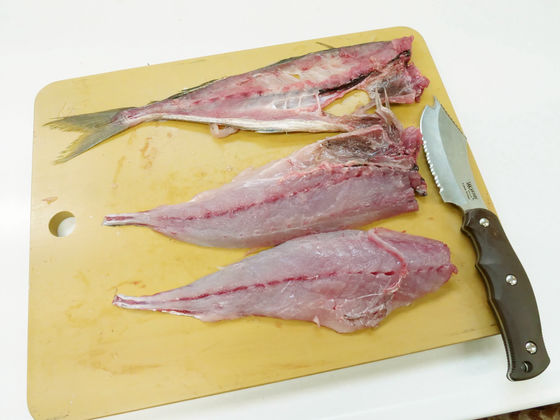
In addition, it is possible to easily perform maintenance when the sharpness becomes poor with the attached dedicated sharpener.

First, sharpen the R-shaped blade in the slit labeled 'CARBIDE' ...
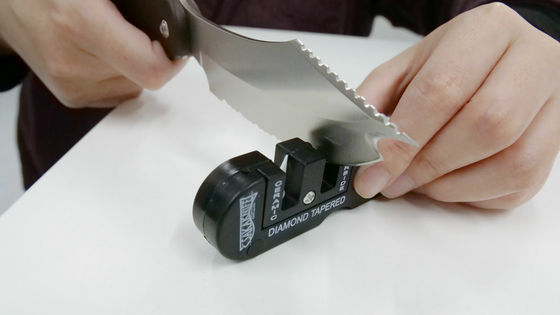
Finish with 'CERAMIC' and complete.
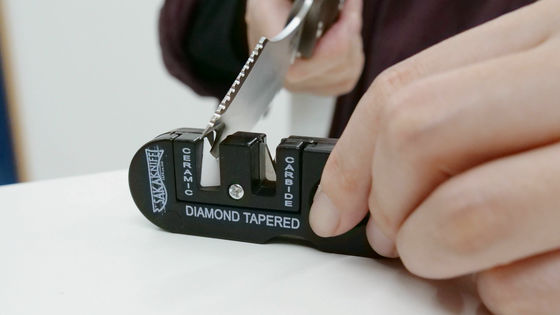
The J-shaped blade at the tip and the saw-shaped wavy blade / scale remover can be sharpened by rubbing the rod-shaped part several times at the angle of the blade.
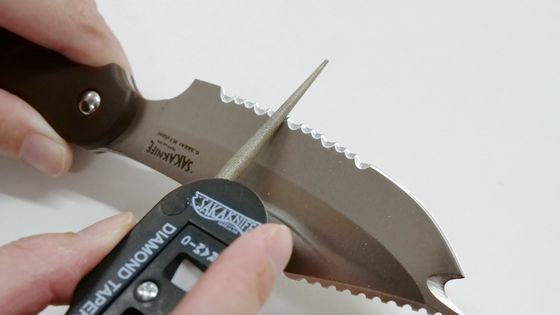
Sakaknife can be purchased at Amazon.co.jp for 13,985 yen including tax.
Amazon | SAKAKNIFE (with sharpener and explanation DVD) Made in Japan (dark brown) | Knife, knife, scissors online shopping

Related Posts:

